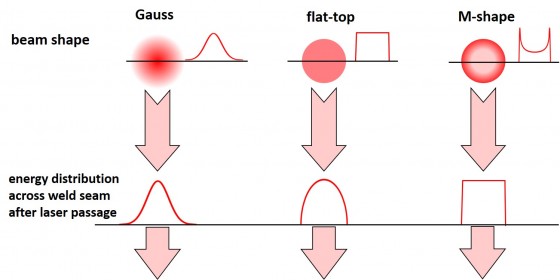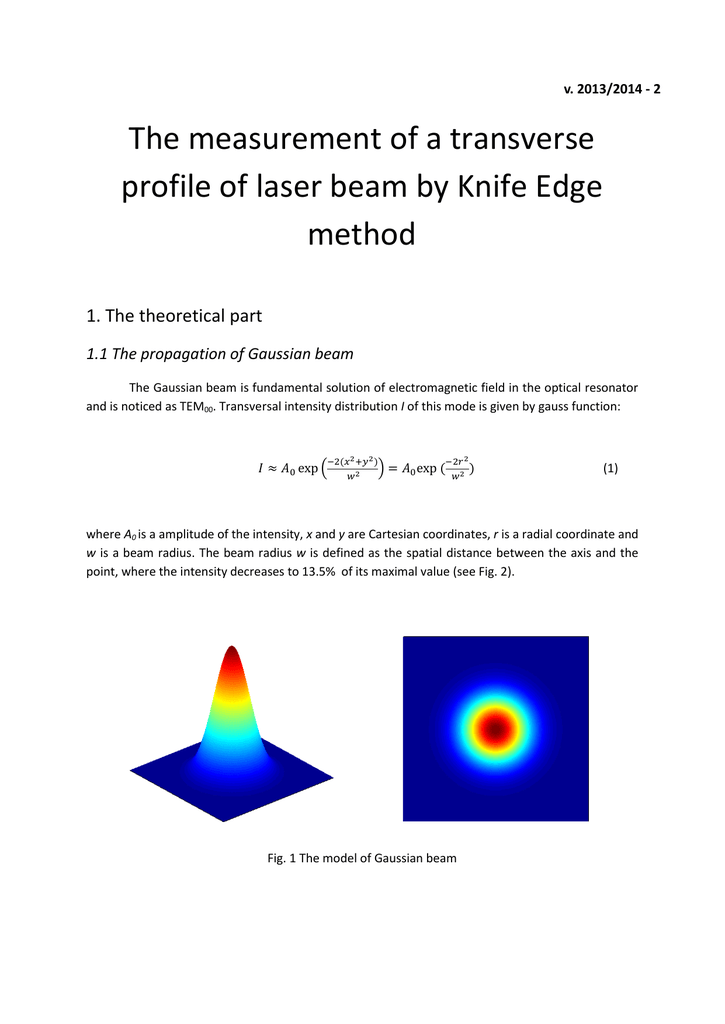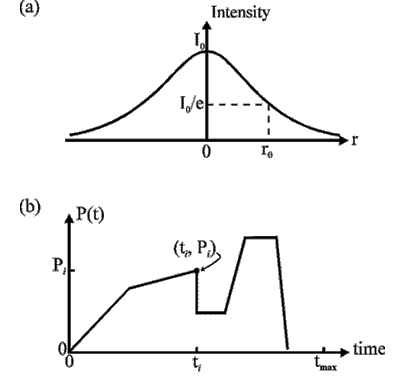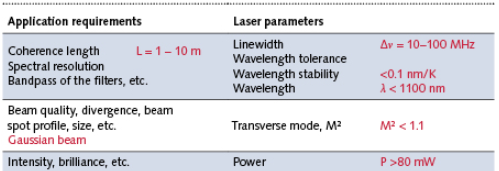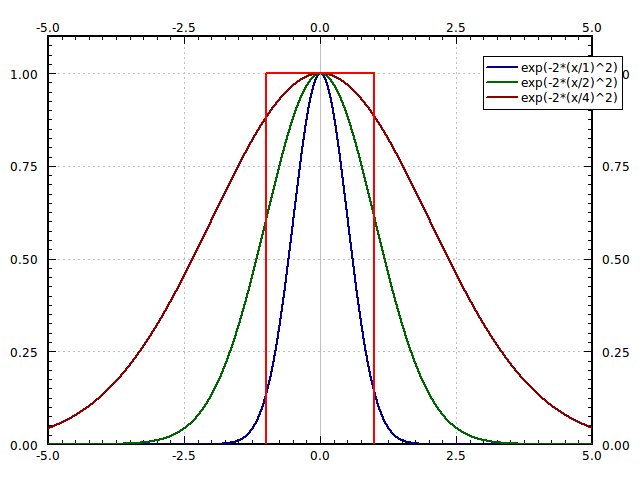In general laser beam propagation can be approximated by assuming that the laser beam has an ideal gaussian intensity profile which corresponds to the theoretical tem 00.
Gaussian laser beam profile.
Encyclopedia letter g gaussian beams.
Flat top beams are one such example where a beam exhibits a nearly constant irradiance over its beam width see figure 4.
There are a number of non electronic methods of laser beam profile measurement that have been.
This also implies a gaussian intensity irradiance profile.
Finally we learned that careful measurements of the beam profile such as ours can even be used to roughly determine the wavelength of the laser.
Due to diffraction a gaussian beam will converge and diverge from an area called the beam waist w 0 which is where the beam diameter reaches a minimum value the beam converges and diverges equally on both sides of the beam waist by the divergence angle θ figure 2.
A gaussian laser beam at the same average optical power as a flat top laser beam will have a peak fluence twice as large as that of the flat top figure 2.
From figure 12 6 we can see the thickness of the spiral phase plate changes according to its azimuthal position.
Gaussian beam is quite common and widely available thus a laudable goal would be to generate oam beams from an input beam with gaussian profile.
However this irradiance profile does not stay constant as the beam propagates through space hence the dependence of w z on z.
How to cite the article.
These two idealized beams.
A flat top beam or top hat beam is a light beam often a transformed laser beam having an intensity profile which is flat over most of the covered area.
This fundamental or tem 00 transverse gaussian mode describes the intended output of most but not all lasers as such a beam can be focused into the most concentrated spot.
Such beam profiles are required for some laser applications.
A gaussian beam allows the highest concentration of focused light whereas a flat top beam allows for very uniform distribution of the energy across a given area.
In optics a gaussian beam is a beam of monochromatic electromagnetic radiation whose amplitude envelope in the transverse plane is given by a gaussian function.
References 1 enrique j.
Gaussian beams remain constant under transformations.
In other cases a laser beam is modified by an optical system to such an extent that its profile and propagation can no longer be approximated using the gaussian beam analysis.
This is in contrast to gaussian beams for example where the intensity smoothly decays from its maximum on the beam axis to zero.
Therefore the beam profile is still gaussian as the beam propagates through the system even as the beam size varies.
Gaussian beam optics 2 2 gaussian beam optics in most laser applications it is necessary to focus modify or shape the laser beam by using lenses and other optical elements.
Profiling a gaussian laser beam ben coe pradyoth kukkapalli and annie nam laser teaching center stony brook university.








